Click Here to Download PDF Version
Telehealth Newsletter
Official Newsletter of Tamil Nadu Chapter of Telemedicine Society of India
| What is New?
This New Year’s first issue carries very interesting perspectives from different health domains from mental health to how our health will cope in a microgravity environment of space travel. Dr. Smriti Joshi leads the tele-psychology group and has published a paper entitled “Are you ready for the shift?” From In person therapy to telepsychotherapy” in Indian journal of clinical psychology. We congratulate her for her recognition in this field and for being awarded Ethics in tech leader award for 2022. Practical application of telehealth in saving lives among stroke patients especially in remote locations in Uttarakhand state is covered by Dr. Meenu Singh our president of the society. Thank You |
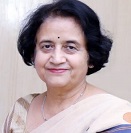 Telemedicine Workshop for Trauma & Stroke
Telemedicine Workshop for Trauma & Stroke
Dr. Meenu Singh
Executive Director, AIIMS Rishikesh
President, TSI
Head injury is a major cause of mortality and disability in the working population, resulting in more than 200,000 deaths in India every year. The survivors of head injury become dependent on their family members for months to years, resulting in major financial implications for the family. The department of Neurosurgery organized a two-day CME on 20-21 January 2023 for management and triaging of head injury patients. This CME was attended by 18 medical officers from 10 different districts of Uttarakhand state, 10 neurosurgery residents, 20 nurses and 20 BSc nursing students.
There was a dedicated session on telemedicine on 21 January 2023. In this session, Dr Amit Aggarwal, Assistant Professor, Department of Telemedicine from PGIMER Chandigarh discussed ‘Telemedicine Practice Guidelines’. In this lecture, medical officers were explained how to utilize telemedicine, precautions to be taken while using telemedicine and about the need to take informed consent from the patient and their family. This was followed by the talk by Professor Padma Srivastava, Chief, Neurosciences Center, AIIMS Delhi. In her talk, she shared her experience with telemedicine in management of stroke at the grassroot level in the states of Himachal Pradesh, Haryana and Punjab. Prof Padma led multiple state-level projects in these states, very similar to the ones that is being planned by the team led by Dr Nishant Goyal and Dr Jitender Chaturvedi in Uttarakhand. Time is of important in both stroke and head injury and telemedicine can be utilized in preventing loss of crucial transport time. In her talk, Prof Padma explained that they initially trained medical officers in identifying stroke and differentiating ischemic from hemorrhagic stroke on plain CT scans. They were trained regarding managing ischemic stroke with intravenous thrombolysis. Neurologists at AIIMS, Delhi and IGMC, Shimla were available via telemedicine to provide support to these doctors. They protocol was to discuss the clinical condition of the patient and evaluate the CT scans via telemedicine.
This was followed by the talk by Dr Nishant Goyal, Additional Professor, Department of Neurosurgery at AIIMS, Rishikesh. In his talk, Dr Nishant explained what information should be provided by the medical officers to the neurosurgery team at AIIMS Rishikesh while communicating via telemedicine. With the use of telemedicine, medical officers across the state would thus be in touch with Neurosurgery team at AIIMS Rishikesh and would receive support in providing initial treatment and triaging these patients. This will help in preventing unnecessary transfer of many head injury patients, who will be managed and triaged by the medical officers at grass-root level, close to patient’s residence. The same network will be used in following up the patients of head injury, discharged from AIIMS Rishikesh. After this, the medical officers were taken to the telemedicine facility at AIIMS Rishikesh, where they were introduced to e-Sanjeevani, a telemedicine web-portal, developed by the Government of India.
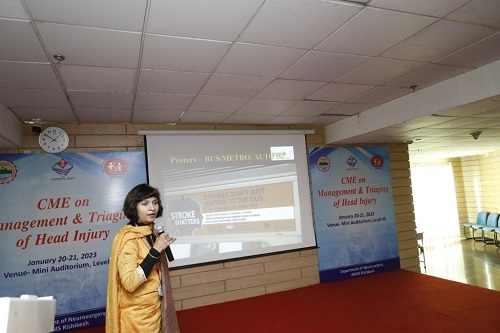
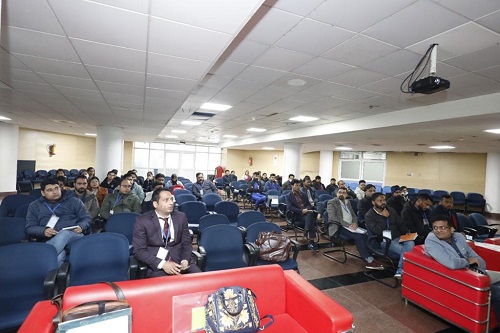
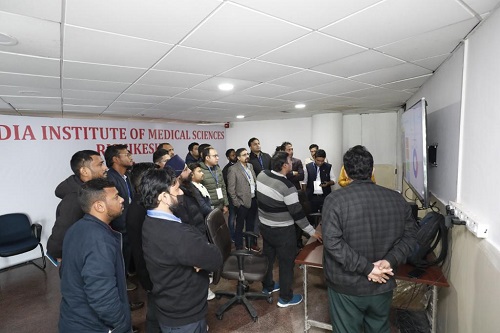
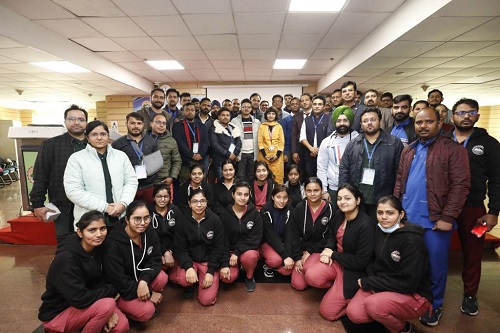
 Global Recognition received for Safe Delivery of Tele mental health services following legal and ethical Standards
Global Recognition received for Safe Delivery of Tele mental health services following legal and ethical Standards
Dr. Smriti Joshi MBPsS
M.phil Clinical Psychology
Chief Psychologist & Member board of Directors, Wysa
The WHO estimates that about over 450 million people globally suffer from mental health disorders. It was suggested way back in 1996 that by the year 2020, our world would be reeling under increased health burden due to mental disorders (Murray and Lopez 1996). No one had imagined back then that a pandemic would strike the entire globe leading to not just physical health crisis but also trigger a Tsunami of mental health concerns. The existing gaps in seeking mental health care arising from shortage of mental health professionals, concentration of most mental health professionals in urban areas, stigma around seeking mental health care and loss of access to physical health care facilities due to social isolation guidelines worsened access to mental health care in India and globally.
Telepsychology services existed even before the pandemic but the pandemic forced both service providers and service users realise the power of digital health modalities to access health care services, especially for mental health care. Some countries were better prepared for their health care providers to make this shift from delivering onsite or in person health care services to delivering mental health services via online modalities. These countries already had good practices and standards of care documented and established around how to offer mental health care services at scale, in a legal and ethically safe way, yet this sudden and forced transition was not easy for anyone. Just around the same time, there was a steep increase in demand for remote mental health services not just to bridge the gap that was triggered due to the pandemic but also to provide mental health support at scale to people across the mental health spectrum. Digital mental health innovations saw a rise like never before and a large variety of digital mental health products and services came into being. Mental health professionals were being hired not just to offer therapy but to assist or take lead with ideating, creating products and service platforms that could meet and bridge the demand-supply gap as well as offer innovative ways to assess and manage mental health concerns at a population level and be able to triage if needed. These are new exciting support unities and psychology students and mental health professionals want to feel more prepared to offer these services but also want to learn to do this in a legal and ethically safe way.
When I had made this professional decision to move into telemental health space about 10 years ago, it was my training at the telemental health institute that had given me the confidence to make this transition, to design products and services that were well grounded with evidence based research and using best practices. There’s a clear need for capacity building and training and guidance for mental health professionals aspiring to enter mental health domain in tech space and for other mental health professionals as well to stay updated with this rapidly evolving space. I volunteered as an expert in this field, to help draft the first set of guidelines for offering telepsychology services and conducted webinars and virtual trainings for the psychologist fraternity in India and South east Asia to assist them with this transition from in person services to offering services using online modalities. Also as a lead for ethics in tech team at therapistsintec a not for profit organisation that came into being during the pandemic promoting the development of ethical digital mental health leaders through authentic connections, upskilling, mentoring, training, and inclusion, I along with my co lead Dr. Erika Torres conducted a survey to assess the need-gap analysis being experienced by mental health professionals aspiring to offer services in this space. The survey results indicated the immense need (30.8%) to learn about how to deliver clinical services/interventions via telehealth in an ethical way. About 23% of members expressed that they wanted to know more about legal and ethical issues that a provider/organisation can face when providing their services via online modalities and another 23% expressed their need to learn more about ethics of using ML and AI in mental health or for mental health service delivery.
These results found support in a recent research paper titled ” Ethics in Telehealth: Comparison between Guidelines and Practice-based Experience” , where key findings from their work indicate that there exists a gap in what practitioners or service providers would find helpful as guidelines and the actual content of existing telehealth /tele mental health guidelines globally. It was observed that existing guidelines are more focused on the structural aspects of telehealth whereas the clinician or practitioner focus on behavioural challenges and implications of using telehealth in specific contexts seems to be not addressed.There is a need to identify and collate Practitioner perspectives and create sources for practice based evidence to develop a better or more helpful set of guidelines that address our questions or need to know ethical implications of delivering services via various modalities, with people from different cultural backgrounds , how social determinants are impacting client’s access to these services , what are the challenges of integrating ML and AI in actual service delivery mechanisms and its implications on outcomes. This survey has led to taking more informed steps for “therapistsintech” members and the larger mental health fraternity to support, train and provide mentorship to aspiring members so they can feel more confident and unleash their full potential. I also shared these results and my vision around bridging the gap that exists between published legal & ethical guidelines and challenges clinicians experience while trying to implement these in their practice at the 8th Annual eMHIC Congress and have been invited to contribute to the position statement on ethics in digital mental health being drafted by a special interest group at eMHIC. These efforts were really appreciated by Therapists in Tech community and I was awarded Ethics in tech leader award for 2022.
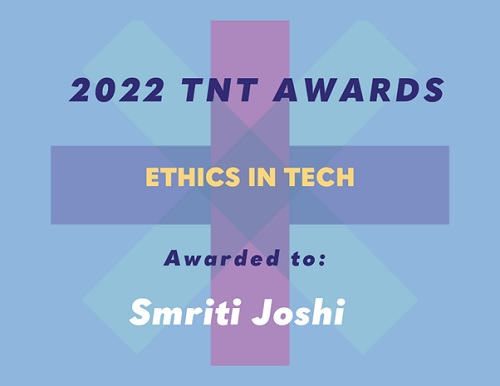
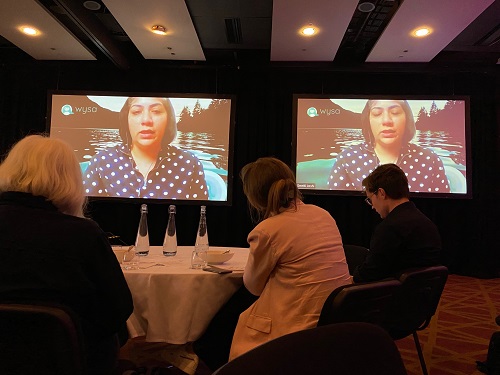
 A Journey Into Space
A Journey Into Space
Prof Thais Russomano, MD, MSc, PhD
InnovaSpace UK (http://InnovaSpace.org)
Future space missions aim to further the capabilities of space travel by aiming to fly farther and for longer than ever before. The National Aeronautics and Space Administration (NASA) and a number of private space firms (such as Blue Origin, SpaceX, and Virgin Galactic) have already begun the process of getting ready for long-distance, long-duration space exploration. They currently have plans to explore inner solar planets (such as Mars) by the 2030s. Space travel has emerged as a potential new, exciting frontier of commerce, hospitality, medical, and technology in the upcoming years thanks to the development of space tourism. However what are the implications of space travel on our health.
The presence of gravity on Earth has had an integral effect on the development of life over billions of years and has shaped the anatomy and physiology of human beings. Exposure to microgravity has been shown to affect the whole body, causing numerous changes, such as a reduction in heart size and blood volume, disturbances of the neurological system, decreases in bone and muscle mass, and impairment of the immune function. These physiological changes can lead to undesirable health consequences and to operational difficulties, especially in emergency situations.
The paper entitled Human Health During Space Travel: State-of-the-Art Review is an open access article that presents aspects related to the medical selection of astronauts and examines the physiological and psychological reactions of body and mind to the hostile environment of space. We categorized the extraterrestrial environment into exogenous (like space radiation and microgravity) and endogenous (like altering the human circadian rhythm and mental health due to confinement, isolation, immobility, and lack of social interaction) processes and their various effects on human health. In order to enable new paradigms for space health, we analysed potential health risks connected with space flight and how they might be mitigated, as well as how to employ developing artificial intelligence (AI) technologies to further future space health research.
Space is undoubtedly humankind’s final frontier. Fasten your seatbelt, click on the link and enjoy your free journey into space and read how it can affect your health!
https://www.mdpi.com/2073-4409/12/1/40
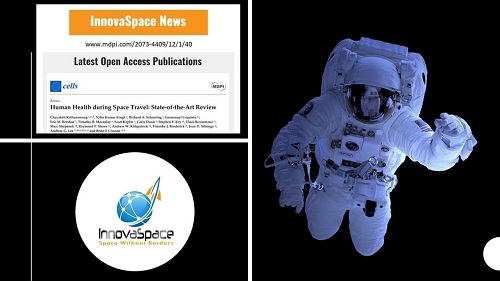
 Virtual healthcare in the new normal
Virtual healthcare in the new normal
Dr. Nitin Upadhyay
Associate Professor, IT Systems & Analytics, Chairperson MBA, Program Director Executive Program in Digital Finance and Banking, Indian Institute of Management Jammu
The use of information communication and technology (ICT) in public administration systems and service delivery has become increasingly crucial in today’s world as governments around the globe invest in upgrading their ICT infrastructures. One of the most promising applications of ICT in public service delivery is telemedicine, which allows patients and doctors to connect remotely, eliminating the barriers of time and distance and reducing healthcare costs. India, in particular, faces a shortage of doctors and nurses, resulting in a significant gap in healthcare services. To address this issue, the Indian government has implemented regulations, policies, and solutions to strengthen telemedicine services.
The National Telemedicine Service – eSanjeevani was launched in 2019 as a doctor-to-doctor telemedicine platform, operationalizing the Ayushman Bharat health insurance scheme. Amidst pandemic, the Indian Ministry of Health and Family Welfare (MoHFW) expanded the capabilities of eSanjeevani, a telemedicine platform, to provide patients with remote access to medical consultations. This e-government healthcare service allows patients to receive medical treatment from the safety of their homes, instead of in-person visits. This new approach to virtual consultations is a revolutionary way for patients to communicate with healthcare professionals and receive medical services.
However, the successful implementation of these services depends on the willingness of healthcare consumers to adopt telemedicine. Our research aimed to understand users’ attitudes and behavioral intentions towards adopting e-government telemedicine services. The research extended the unified model of e-government adoption (UMEGA) by considering factors such as perceived severity, self-efficacy, and political trust.
The study’s findings revealed the significant impact of “facilitating conditions” on both effort expectancy and behavior intention in regards to the adoption of e-government telemedicine systems (EGTMS) such as eSanjeevani. To accomplish this, the government must invest in the development and provision of a favorable ICT ecosystem that supports the implementation and delivery of EGTMS. This includes designing, procuring, and developing a viable technology infrastructure and ICT tools, as well as ensuring the availability of affordable data packages, uninterrupted power supply, internet connectivity, and access. Furthermore, the government can take steps to reduce the learning curve for individuals using the system, such as providing helpdesks and individual training sessions.
Users’ perceptions of risk can have a major impact on their attitudes and decisions to adopt e-government telemedicine systems (EGTMS). In the virtual environment in which e-government services operate, users may encounter various uncertainties and have concerns related to financial, psychological, performance, and security risks. To address these concerns, it is crucial for the government and administrative entities to design and implement robust and secure systems that can help users overcome these risks. Additionally, providing users with training on the proper use of information can help to alleviate any uncertainties they may have.
Telemedicine services such as eSanjeevani can serve as a medium for preventive health behavior, rather than just a medium for consultation services. Therefore, it is important for the government to strategize and roll out appropriate health communication and health literacy programs to mobilize the public and motivate healthcare consumers and professionals to use EGTMS. Overall, the study suggests that government and administrative entities should focus on building a facilitating environment, developing positive attitudes, addressing perceived risks and promoting self-efficacy for increasing adoption of EGTMS.
Telemedicine holds enormous potential to revolutionize healthcare in India and other countries by reducing the gap in healthcare services. However, to ensure the success of telemedicine services, the government must invest in a favorable ICT ecosystem and address the attitudes and perceptions of healthcare consumers.
The details of the original published paper can be accessed through the following link
https://www.sciencedirect.com/science/article/pii/S0740624X22001368
Telemedicine – News from India & Abroad
New Technology and Old Books to Combat Insect-Borne Diseases Says Google
Google is developing a new technology to combat such diseases using decades-old datasets mined by Google Books as insect-borne diseases are affecting the lives of hundreds of millions of people every year. …Readmore
Artificial Intelligence Tool to Predict Lung Cancer Risk
Sybil, the artificial intelligence (AI) tool developed by researchers precisely predicts lung cancer risk for people with or without a significant smoking history. Results are published in the Journal of Clinical Oncology…..Readmore
On-The-Go Cardiac Imaging on Its Way!
Wearable ultrasound device that can assess both the structure and function of the human heart has been developed by engineers and physicians at the University of California San Diego and published in the journal Nature. …Readmore
Early Signs of Alzheimer’s Disease may be Detected With Artificial Intelligence (AI)
OpenAI’s GPT-3 program can identify clues from spontaneous speech that are 80% accurate in predicting the early stages of dementia as demonstrated by the research from Drexel University’s School of Biomedical Engineering, Science and Health Systems, published in the journal PLOS Digital Health ….Readmore
Click here to Become a Member of Telemedicine Society of India
Telemedicine Practice Guidelines – A Foundation Course for RMPs by TSI Faculty
To know more about the Telemedicine Foundation Course click on the link below:
https://tsitn.org/tpg-course/
TN – TSI invites all the TSI Chapters and Members to submit information on their upcoming Webinar or Events (50 words), News related to Telemedicine (200 words) or short articles (500 words) for the monthly e-newsletter.Guidelines for submission to TN TSI Newsletter-
|
Submission may be sent to – tsigrouptn@gmail.com
Editors reserve the rights for accepting and publishing any submitted material.
Editor in Chief – Dr. Sunil Shroff
Editors – Dr. Senthil Tamilarasan & Dr. Sheila John
Technical Partner- https://www.medindia.net


